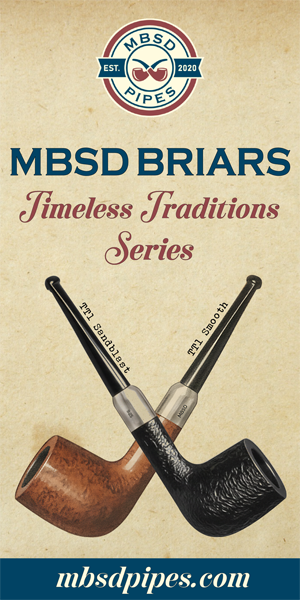Techie, while there are some very thoughtful posts in this thread I don’t believe anyone has directly answered your question. The difference between a $70 Savinelli 320 and a $200 version is the finish alone. However, your broader question really can’t be answered generally because unlike the Savinelli 320 which follows a formula, artisan pipemakers generally follow themes but not rules.
For example, modern American pipe makers generally try to make stems that fall within a specific range of width and depth, drill airways to 4mm, most use ebonite for stems, chamfer tenons, use bowl coatings and source briar from the same shop in Italy. All of this represents a little objectivity and forms a baseline expectation of what you should be getting for your hard earned cash. Not all NA carvers follow these guidelines but most do, and this is the foundation that new carvers learn to distinguish their product from the mass marketed stuff.
Alright, so...you’ve got 300 bux, you pick out a artisan pipe that follows the guidelines, all you need to do now is click the buy button and wait for nirvana to land in your lap, right? Right...?
Aww hell nah. Not if you’re gonna smoke it, that is.
There is no way to determine how well a given block of briar will perform until it’s smoked. The single greatest predictor of smoking quality (huge IMHO) is how long a block has seasoned prior to carving. All a pipemaker can do is buy briar from a reputable cutter and age it prior to carving. And here is the greatest information black hole in pipemaking, but particularly amongst NA modern pipe makers.
What’s the problem? Well, most pipe makers age blocks for less than a year after receiving them from the briar cutter (where they are aged 2 or 3 years, generally) because they need to carve, understandibly, to put food on the table. So, very few can afford to season blocks and fewer still report any information about this on their own website let alone on a second party web-store. For example, take a peek at a bio page for any of the new carvers that have debuted on spc within the last two years and try to find a single objective detail that relates to the briar cure or really, anything about the materials or construction quality.
Alright, so what’s the point? Well with regard to modern NA carvers what you pay for is refinement and appearance.
Ok, so how does that compare to your $70 Savinelli 320 (my favorite of their shapes)? Well, unlike your artisan, Savinelli has the resources to stockpile literally tons of briar which they can season properly prior to carving. Unlike your artisan pipe they can offer competitive briar quality but without an artisans refinement.
Let’s take a quick peek at what lays in between the artisan and the mega factory, what I call the pipe workshop. These are places that utilize multiple carvers to produce pipes under a banner, like Castello, for example. Like Savinelli, Castello has the resources to sit on a mountain of briar, but they add a strict aging protocol to ensure every block is well seasoned prior to carving. There is no rolling the dice. Like an artisan, stems are hand cut and bowls are hand carved. However, these pipes (like most Italian pipes) don’t conform to the NA pipemakers theme.
And finally, a curveball.....what happens if you take that theme above and adapt it to a pipeworkshop that use sophisticated machines to carve the bowls? Well, you get briarworks. In the early days they used the same briar as the artisan carvers but have switched things up due to demand, and of course they use acrylic stems.
So a bit less refinement than artisan, more than a factory and briar that is as good as an artisan, but a broader pool to draw from.
Phew...well, all imho. Many may find this conspiratorial, or whatever...but hey, these are the things that direct my purchases today based on what I’ve picked up and come to value through many purchased pipes.
I’ll add one final point, the age of a briar burl and the duration of seasoning used to be a selling point of pipes in the golden age. Factories at the time also hand carved or hand finished stems and valued comfort. I think that modern pipes are still trying to reach the level of achievement of the past pipemakers in some sense, at least.







